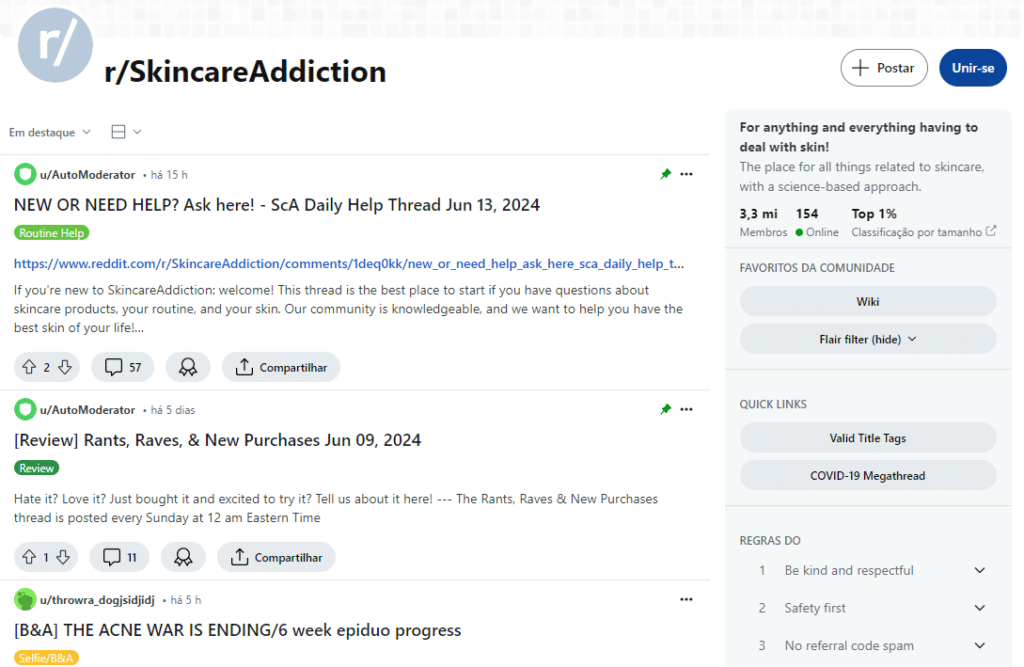In a day and age when nearly everyone is shopping online, ecommerce is more than just an opportunity. It’s a chance to potentially sell to millions of people and make a lot of money doing it.
However, it’s crucial to implement the right strategies and techniques if you’re serious about succeeding.
In this comprehensive guide, we’ll cover expert tips and best practices for how to make money with e-commerce.
Read on to learn all about the hottest types of ecommerce, ecommerce marketing, and more.
- What Is Ecommerce?
- Benefits of Ecommerce
- 10 Ecommerce Ideas to Start with Little to No Money
- How to Start an Ecommerce Business Today
- Ecommerce Niche Research
- Top Ecommerce Product Sourcing Models
- Top Ecommerce Platforms
- Ecommerce and Content Creation: Leveraging WriterAccess
- How Profitable Is Ecommerce?
- Essential Marketing Knowledge for Running an Ecommerce Business
- Ecommerce FAQ
- Conclusion
What Is Ecommerce?
Short for electronic commerce, ecommerce is the practice of buying, selling, and marketing services, products, or both online.
Transactions take place over the internet via various platforms, apps, and interfaces. These include but may not be limited to social media, business websites, and ecommerce storefronts.
Types of ecommerce
There are various types of ecommerce to consider, as well:
B2B (business to business): Transactions where businesses sell products or services to other businesses. Example: A software company sells a project management tool to a marketing agency.
B2C (business to consumer): Transactions where businesses sell products or services directly to individual consumers. Example: An online retailer sells clothing to individual shoppers through its website.
C2C (customer to customer): Transactions where consumers sell products or services to other consumers, typically through a third-party platform. Example: An individual sells a used smartphone to another person on an online marketplace like eBay.
C2B (customer to business): Transactions where individuals sell products or services to businesses, such as freelance work or user-generated content. Example: A freelance graphic designer provides logo design services to a startup company.
Benefits of Ecommerce
Going into ecommerce comes with multiple advantages, especially for those who don’t want to open a traditional store. Here are some prime examples.
You can forgo the physical storefront
Although some merchants go into ecommerce in addition to running a physical store, that’s completely optional. Sticking strictly to ecommerce allows you to sidestep expenses related to building maintenance, security, etc.
Low overhead costs
Opening and running a traditional brick-and-mortar shop can cost you. But ecommerce is comparatively affordable. Instead of paying through the nose for rent, employee salaries, and warehouses, you can simply cover a web hosting fee.
It’s easy to scale your business
There are limits to how big a traditional business can grow before it needs to expand or open additional locations. However, there are no growth limits attached to an ecommerce business. You simply allow your website or virtual storefront to grow along with your brand.
You have access to a massive audience
Saying that ecommerce is booming is a real understatement. According to eMarketer, up to 24 percent of retail sales are likely to be ecommerce sales by 2026. Venturing into ecommerce gives you the chance to reach massive markets from all over the world.
It’s easy to track your data
Tracking and analyzing your progress and growth isn’t impossible with a traditional business, but it’s much easier with ecommerce. Built-in analytics, inventory tracking, marketing automation, etc., take all the guesswork out of monitoring how you’re doing.
10 Ecommerce Ideas to Start with Little to No Money
We’re serious when we say you don’t need much startup money to get started in ecommerce. Here are a few ecommerce ideas to make money that require little to no upfront capital out of pocket.

- Monetize a blog. If you’re already blogging, consider kicking things up a notch by using it to sell products or services, delve into influencer marketing, etc.
- Explore print on demand. A third-party service handles the dirty work of printing, shipping, and handling customer service. You focus on designing and uploading amazing content for products.
- Market handmade items. Handmade arts and crafts are huge these days, and ecommerce makes it easier than ever to sell yours.
- Market your skills. Are you a whiz at freelance writing, consulting, or virtual assisting? With ecommerce, you can earn a living marketing just about anything you’re good at as a service for hire.
- Dive into affiliate marketing. Many brands offer affiliate programs that represent wonderful opportunities to make money. You market their products and receive a commission for each sale.
- Consider dropshipping. Dropshipping is a solid way to dive into retail without the need to stock and ship products yourself. You handle the marketing. A third party handles the rest.
- Sell digital products. Intangible digital goods like videos, apps, designs, or plug-ins can make excellent products to market and sell.
- Start a subscription box. Subscriptions are smart ways to virtually guarantee repeat business from satisfied customers. Come up with a unique idea and go for it.
- Join a marketplace. Love the idea of ecommerce selling but not the idea of managing your own standalone website? Try selling through a major marketplace (e.g., eBay or Amazon) with a built-in audience instead.
- Explore ecommerce resale. You don’t necessarily need to create your own products to get into ecommerce. Reselling lets you easily flip or resell existing goods at a profit.
How to Start an Ecommerce Business Today
Ready to try your hand at launching a profitable ecommerce business of your own? Here’s a user-friendly step-by-step guide for getting started in the right direction.
Step 1: Choose your niche
First, settle on what type of business you’d like to start. What services or products do you want to sell? Who is your target audience, and how do you plan to serve their needs?
Step 2: Conduct market research
Next, you need to develop an understanding of the existing market you’ll be entering. Who are your competitors, and how are they already serving your potential customers? Where do your products and services fit into that picture?
Get answers to questions like these by reaching out to real members of your target audience. These can be existing customers you already have, members of demographics you’d like to reach, or both.
Step 3: Source your products
Will you be creating and shipping your products yourself or leveraging third-party services to simplify the process? Decide whether you’ll be partnering with other service providers, and carefully vet your options.
Step 4: Choose an ecommerce platform
Where and how you sell your products is just as important as what you sell. Whether you’re building your site or selling through an existing one, choose an ecommerce platform that suits your needs.
Step 5: Set up your online store
Next, focus on creating an appealing storefront experience for your future customers via a reliable ecommerce SEO checklist. Make your shop easy to navigate, fast, and user-friendly to optimize the customer experience. Test its functionality thoroughly before making it available to your customers.
Step 6: Launch and promote your store
Once everything in your shop is just so, it’s time to launch it and begin the marketing process. Essential marketing tools include a robust social media presence and an active brand blog to attract customers and boost SEO.
Ecommerce Niche Research
Choosing the right niche is crucial for the success of your ecommerce venture. Using the right tools and strategies can help you identify a profitable niche that aligns with your strengths and interests. Here are some essential tools and tips to get you started:
Tools for Niche Research
- Google Trends: Use this tool to see the popularity of search queries over time, helping you identify emerging trends and seasonal interests.
- SEMRush: This comprehensive SEO tool offers insights into keyword volume, competition, and related keywords, allowing you to gauge interest in your niche.
- Ahrefs: Use Ahrefs to analyze your competition, discover top-performing content, and find gaps in the market that you can fill.
Leverage these tools to understand what your desired audience is interested in and searching for. Analyze the data to see how your products or services can meet their needs.
For instance, if Google Trends shows an upward trend in eco-friendly products, and SEMRush reveals low competition for certain related keywords, you might consider an eco-friendly niche.
Validating Your Chosen Niche
Before fully committing to a niche, ensure it has potential profitability by:
- Assessing Audience Size: Look at the size of your target audience on social media platforms. A large, engaged audience indicates a healthy demand.
- Analyzing Competition: Research your potential competition to understand their strengths and weaknesses. Tools like Ahrefs can show you what keywords they rank for and where you can outperform them.
- Researching Trends: Stay updated on current trends in your niche by following industry news and reports. Use tools like Google Trends to track interest over time.
- Engaging in Forums: Dive into forums and online communities dedicated to your niche. This helps you gauge the interests, pain points, and preferences of your potential customers.
A practical example of how to validate your chosen ecommerce niche
Suppose you are interested in the niche of organic skincare products.
1- Start by using Google Trends to confirm rising interest in organic skincare.
2- Next, use SEMRush to conduct keyword research to find keywords like “best organic skincare,” “organic skincare routine,” and “natural skincare products.”
3- Look at the search volume and competition level. A high search volume with moderate competition indicates good potential.
4- Use Ahrefs to analyze your competition by seeing which keywords they rank for. Identify gaps where you can position yourself better.
5- Check the size of relevant groups on social media platforms like Facebook or Instagram.
6- Finally, visit forums like Reddit’s skincare community to see what issues and products are frequently discussed. High engagement and specific product mentions can validate the niche’s potential.
By following these steps and leveraging the right tools, you can effectively research and validate a profitable ecommerce niche.

Top Ecommerce Product Sourcing Models
Choosing the right product sourcing model is a crucial part of building a successful ecommerce brand. The following are all popular options:
Dropshipping
Dropshipping platforms make it possible to get started from anywhere with manageable startup costs. It’s also easy to test new products for viability. However, merchants don’t have much control over their supply chain. You also can’t personally inspect products before they ship.
Options to explore: AliExpress, Spocket, SaleHoo
Wholesale
Going the wholesale route lets you sell products in bulk to retailers instead of individual consumers. Doing things this way can lead to more consistent, predictable revenue and sales. However, you’ll need more upfront capital to acquire the initial product. You also have less control over how your products are ultimately priced or sold.
Options to explore: Amazon Business, Go Wholesale
Private labeling
Private labeling is a terrific option for merchants interested in controlling every aspect of how their brands and products develop. You also enjoy total control over pricing, packaging, design, etc. However, you need to be prepared to think big and to deal with the possibility of failed products.
Options to explore: Popular product categories like clothing, toys, beverages, etc.
Print on demand
Print-on-demand ecommerce is booming right now thanks to its low barrier to entry, cost-effectiveness, and flexibility. However, potential drawbacks include product availability, loss of control over quality, and lower profit margins.
Options to explore: Printful, Printify, JetPrint, TeeLaunch

Top Ecommerce Platforms
Need some suggestions on key ecommerce platforms to explore? Check out the following options. They’re popular choices among top brands for some very good reasons.
Shopify
Shopify isn’t just efficient. It’s easy to use and set up, even for ecommerce first-timers. It offers access to multiple themes and plans. Shopify also features a large ecosystem of helpful apps, 24/7 customer service, and plenty of amazing SEO tools.
Pricing: Tiered options start at $29 per month (billed yearly) for basic and top out at $2,300 per month for plus.
WooCommerce
WooCommerce is a fantastic fit for merchants interested in superior customization, easy inventory tracking, and premium SEO-friendliness. It also comes with robust built-in security features and daily backups.
Pricing: WooCommerce is free, open-source software, but you’ll still need to cover hosting and domain costs.
BigCommerce
With BigCommerce, users enjoy access to a multi-storefront interface that simplifies scalability. It also supports multiple currencies, flexible shipping options, and streamlined payment processing. Analytics are robust, as well, making it easy to track your progress.
Pricing: Subscriptions start at $29 per month (billed annually) for standard and top out at $299 per month (billed annually) for pro. There are also custom enterprise packages available.
Magento
Magento comes along with many advantages, including easy scalability, airtight security, and thorough SEO optimization support. It also offers merchants customer segmentation abilities, advanced reporting, and simple customizability.
Pricing: Magento is free to download and install, so startup costs depend on your hosting and domain solutions of choice.
Wix Ecommerce
Wix makes the process of setting up an ecommerce store simple with key features like inventory tracking and easy catalog management. You can also take advantage of multiple shipping options, and secure payment processing options. Wix shops are very easy to organize and design, as well.
Pricing: Wix Ecommerce offers annual plans ranging from $27 per month to $159 per month.
Ecommerce and Content Creation: Leveraging WriterAccess
Content creation is an essential component of any successful ecommerce strategy. High-quality content drives traffic to your online store and helps build trust, engage your audience, and convert visitors into customers.
By leveraging content creation effectively, you can significantly enhance your ecommerce business’s visibility and profitability. Here’s how content creation, particularly through blogs, plays a crucial role in ecommerce:
The Power of Blogs in Ecommerce
- Driving Organic Traffic: Blogs are a powerful tool for driving organic traffic to your ecommerce site. By consistently publishing valuable, keyword-rich content, you improve your site’s SEO, making it more likely to appear in search engine results. This can attract potential customers who are searching for information related to your products.
- Establishing Authority and Trust: Regularly updated blogs that offer insightful, well-researched content can establish your brand as an authority in your niche. When consumers see your brand as knowledgeable and trustworthy, they are more likely to purchase from you.
- Engaging Your Audience: Blogs provide a platform to engage with your audience on a deeper level. You can share stories, tips, tutorials, and other valuable content that resonates with your customers’ interests and needs. This engagement fosters a sense of community and loyalty.
- Supporting the Buyer’s Journey: Content can guide potential customers through their buying journey. Informative blog posts can help in the awareness stage by addressing common problems or questions. Detailed product guides and comparisons can assist in the consideration stage, while customer testimonials and reviews can influence the decision stage.
- Boosting Social Media Presence: Blog content can be repurposed for social media, helping you maintain an active and engaging presence on various platforms. This not only drives traffic from social media back to your ecommerce site but also enhances your brand’s visibility and reach.
- Improving Conversion Rates: High-quality content that educates and informs can significantly improve conversion rates. When potential customers find your content helpful, they are more likely to trust your brand and make a purchase.
Leveraging WriterAccess for Content Creation
WriterAccess is an excellent resource for ecommerce businesses looking to enhance their content creation efforts. Here’s how you can use WriterAccess to elevate your content strategy:
- Access to Professional Writers: WriterAccess connects you with a vast pool of professional writers and designers who specialize in various niches. This means you can find writers who understand your industry and can create content that resonates with your target audience.
- Quality Content on Demand: With WriterAccess, you can request content on demand. Whether you need blog posts, product descriptions, blog post covers, or social media content, you can get high-quality content quickly and efficiently.
- SEO Optimization: Many writers on WriterAccess are skilled in SEO and can craft content that is optimized for search engines. This ensures your content ranks well and attracts organic traffic.
- Consistency and Scalability: Maintaining a consistent content schedule is crucial for keeping your audience engaged and improving SEO. WriterAccess allows you to scale your content production according to your needs, ensuring a steady stream of fresh content.
- Cost-Effective Solutions: Hiring full-time content creators can be expensive. WriterAccess offers a cost-effective solution by allowing you to pay for content as you need it, without the overhead costs of full-time employees.
By integrating content creation into your ecommerce strategy and leveraging platforms like WriterAccess, you can create a robust online presence that attracts, engages, and converts customers.
High-quality, consistent content is the key to standing out in the competitive ecommerce landscape and achieving long-term success.

How Profitable Is Ecommerce?
Ecommerce businesses always have the potential to be insanely profitable. (Key examples include the likes of Torrid, Dollar Shave Club, Modcloth, and Bonobos.) However, multiple factors can affect your profits, especially over time. These include but are not limited to:
- Website design effectiveness
- Customer retention
- Pricing in comparison to market value
- Upfront costs attached to products
- Brand strength
- Content strategy
- Customer service quality
Competition can make achieving peak profitability challenging. But the potential is also limitless. According to research by the NYU Stern School of Business, such businesses can boast gross profit margins of up to 42.78 percent.
Essential Marketing Knowledge for Running an Ecommerce Business
Without marketing know-how and best practices, even the best ecommerce venture will be dead in the water. Here are some key basics to know and master:
- SEO basics: Knowing the ins and outs of good SEO ensures search engines index your shop and serves it up to potential customers.
- Social media marketing: Today’s consumers expect to connect with the brands they buy from on social media.
- Email marketing: Email remains one of the most effective ways to keep in touch with potential customers and nurture viable leads.
- Influencer marketing: Expand your reach and connect with new audiences by partnering with top influencers in your niche.
It’s also crucial to understand the importance of flawless customer service and responsiveness. Embrace proven techniques like interactivity and personalized experiences.
Use customer feedback to improve your service and product offerings. Track and analyze your ecommerce data, as well, and use it to keep improving your marketing approach.
Ecommerce FAQ
Still have questions about how to make money with ecommerce? Check out the following FAQs.
Can you actually make money with ecommerce?
Yes, ecommerce can be very profitable. But it requires marketing know-how, dedication, and an understanding of your target audience.
How profitable is ecommerce?
Competition can make achieving peak profitability challenging. But the potential is also limitless. According to research by the NYU Stern School of Business, such businesses can boast gross profit margins of up to 42.78 percent.
What ecommerce makes the most money?
Handmade products, digital products, subscription boxes, and high-ticket options like electronics are among the most profitable ecommerce niches.
How do I start ecommerce with little money?
Options like print-on-demand, dropshipping, and blog monetization make it easy to dive into ecommerce for little to no startup cost.
Can ecommerce be a side hustle?
Absolutely. Ecommerce can be whatever you want it to be, whether that’s a side hustle or a full-time job.
Is it hard to succeed in ecommerce?
Ecommerce is very competitive, so it can be challenging to succeed. However, it can also be a rewarding process for those with passion and motivation.
What is the richest ecommerce business?
With a market cap of close to $1.55 trillion, Amazon is currently considered the most successful ecommerce business in the world.
Can ecommerce make you wealthy?
Yes, the potential for major wealth is there. But it’s important to set realistic expectations. Achieving that level of success requires a lot of dedication, planning, work, and more than a little luck.
Conclusion
If you’re thinking of giving ecommerce a try for yourself, you’re in for a wonderful adventure. However, it’s crucial to implement best practices, understand your target market, and fall back on the right resources.
The importance of content in today’s marketing landscape means one of those resources should be a WriterAccess account.
Sign up for your free 14-day WriterAccess trial today and connect with some of the best professional writers and designers in the business!
![eCommerce Optimization Guide [with the best tips to boost your sales]](https://rockcontent.com/wp-content/uploads/2022/02/ecommerce-optimization-1024x538.png)






